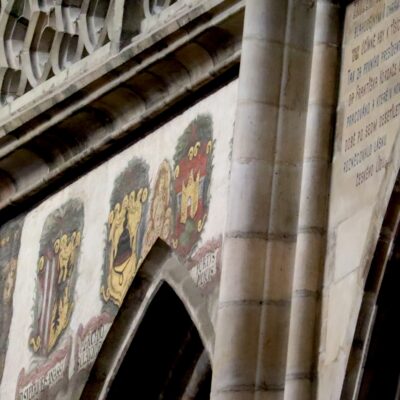Almost a century has passed since the events of the Great War: the ones who experienced the conflict, soldiers and civilians, have passed away decades ago and today only testimonies collected in the archives of the directly involved cities – unique source of memory – can give us an idea of the events. For what concerns Pordenone, the history is not so different from the one characterizing the rest of Friuli: the territory to the right of the Tagliamento river heavily suffered during that period, both for the strained circumstances and the losses of human lives, sons and grandchildren, during the period between 1915 and 1917, and also because of the occupation by Austro-Hungarian troops after the defeat at Caporetto in October 1917, with all the consequences that this debacle carried with itself.
In order to summarize those events it’s necessary to consider a premise that foreruns the entry into the war with the Entente: the majority of the people from Pordenone, as a great part of Italians, were absolutely adverse to the war. Pordenone had three reasons: first of all, a lot of seasonal workers went to Germany to work, and they had no reason to grab the rifle and shoot their employers. Secondly, a great number of Italian businessmen had been expelled from Austria since 1914 and were returning without the possibility of placing themselves, and this produced unemployment. Thirdly, cotton mills – the pulsing heart of the city’s economy – were not receiving raw material from the harbor of Trieste anymore, and as a consequence they had to request it from the distant Genova, which was not so interested.
On may 24, 1915, the first bulletin of war was affixed on the notice board of Caffè Nuovo, one of the most famous historical café of the city, located in the central Piazza Cavour: it was the beginning of the conflict. On 1916 the first warplanes – called Caproni, absolute Italian protagonists during air battles in the North-East skies – arrived in the airport of Comina, first Italian airfield to have a flying-school. Even the well-known poet and soldier Gabriele D’Annunzio will stay in Pordenone before his heroic flight over Lubiana, even if he will not have a part in it eventually; nevertheless the feat was carried out, but tragically failed with the death of a friend, Paolo Salomone.
During 1926 some kind of intolerance started to grow, with the occupation of Sacile train station by the Alpini. However, it’s also a year characterized by inventiveness: Antonio Zanussi founded a small factory producing low-cost kitchens, with only four workers. Zanussi, during the second postwar period, will make this small activity the economic and social soul of Pordenone, with a florid production in the years ’50 and ‘60.
Then Caporetto came, with all its consequences. Austrian occupation involved raids, rapes (it’s estimated that 355 babies were born, “sons of the enemy”) and acts of violence until some special commands were introduced in Pordenone; these commands disciplined the soldiers, but did not stop them from executing their criminal acts. The citizens of Pordenone were starving, because the only possible way to have city supplies was through special permits.
On October, 1918, Italian soldiers finally returned in the city. Austrian soldiers on the run mined all the bridges, even the one of Adamo and Eva over the Noncello river, which was then destroyed despite the attempt made by the mayor Fortunato Silvestri. After Italy’s return, some evaluations were made in order to obtain the next reimbursements. However, these reimbursements were not total, and only 60% of the actual value that had been lost was gave back.
Pordenonese doc, classe 1992. Dottore di ricerca in Scienze storiche tra l’Università di Padova, Ca’Foscari di Venezia e Verona, mi piace pensarmi come spettatore di eventi che in un futuro lontano saranno considerati storia. Far conoscere al meglio e a quanti più possibile il nostro passato, locale e non, è uno dei miei obiettivi e come tale scrivo con passione per le mie amate Radici.





